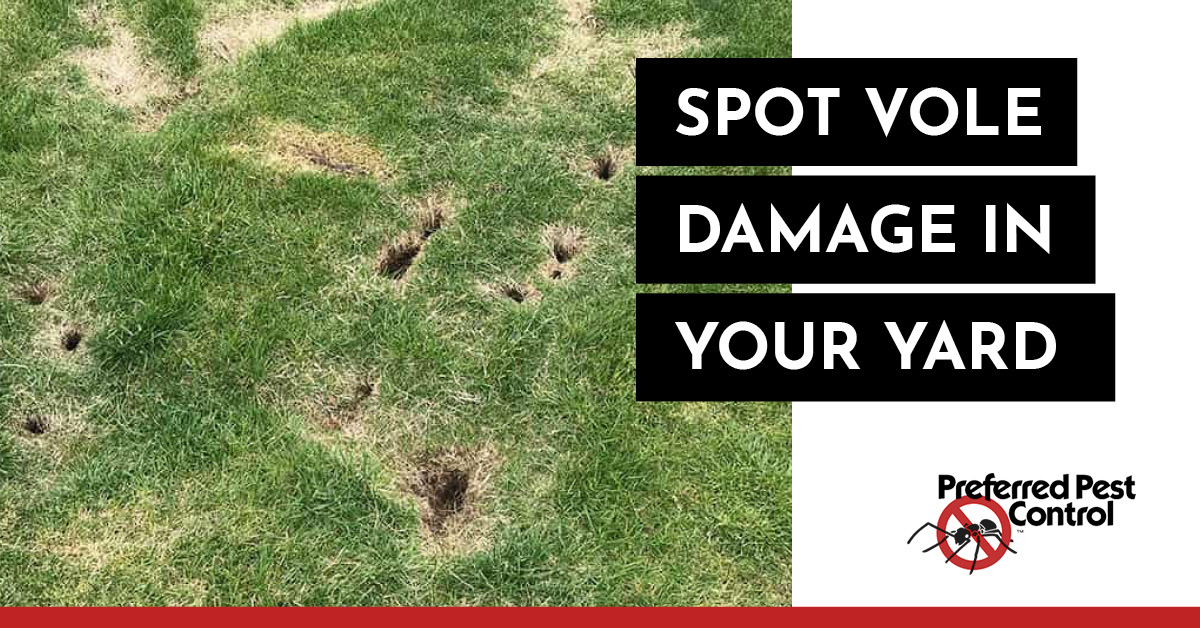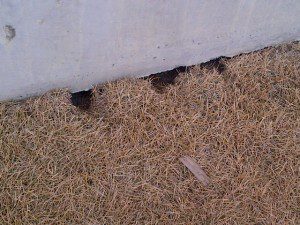Letting Loose the Power of Vole Parasite Control: Advanced Techniques for Problem Obliteration and Therapy
As the perseverance of vole problems continues to challenge homeowner and agricultural professionals alike, the quest for extra efficient and effective parasite control techniques heightens. In the realm of vole management, typical techniques typically fall brief in accomplishing long-term remedies. Recent innovations in bug control innovation and strategies have opened up new methods for combating these elusive rats. By exploring cutting-edge trapping techniques, tactical exemption methods, eco-friendly repellents, and incorporated parasite management options, a promising perspective emerges in the battle versus vole infestations.
Vole Pest Identification and Evaluation
Voles, tiny rats that resemble computer mice but have shorter tails, are typically recognized parasites in yards and backyards, needing complete analysis to establish the level of their problem. Recognizing voles includes recognizing their unique features, such as their stocky bodies, short legs, and little eyes. They are typically around 3 to 9 inches long and can vary in color from grey to brown.
Assessing vole problems is crucial for executing effective pest control strategies. Signs of vole presence consist of paths in grassy areas, damaged plant life, and tiny burrow openings near the surface. By inspecting these indicators, homeowner can evaluate the seriousness of the infestation and devise ideal obliteration techniques.

Cutting-Edge Capturing Strategies
Efficient vole parasite control necessitates remaining abreast of the most recent improvements in trapping strategies to successfully manage problems in gardens and lawns. Traditional techniques like breeze traps and glue boards have their restrictions, leading scientists and parasite control experts to develop more humane and efficient capturing strategies. One cutting-edge method is using real-time catches that record voles without creating harm, enabling their risk-free elimination and launch in an ideal environment away from suburbs. These traps are created to lessen tension on the recorded voles and are multiple-use, making them cost-effective and environmentally pleasant over time.
Another cutting-edge capturing strategy includes making use of digital catches that deliver a gentle and fast electric shock to eliminate voles instantaneously. These traps are designed to be secure for usage around animals and children while giving an extremely efficient approach of vole control. Furthermore, some electronic catches are geared up with sensors and remote tracking capacities, allowing property owners to track vole task and trap standing from a distance, boosting the general effectiveness of vole bug control efforts. By including these innovative capturing methods right into insect monitoring techniques, homeowners can deal with vole problems with precision and concern.

Strategic Exemption Approaches
Executing critical exemption approaches is vital in preventing vole infestations and safeguarding gardens and yards from damage caused by these parasites. These obstacles need to be hidden at the very least 12 inches deep and increase 6 inches above the ground to prevent voles from tunneling beneath or climbing over them.
Another key exemption approach is the usage of gravel or rock mulch rather of natural mulch. Voles are much less most likely to tunnel with rough surface, making this a much less appealing atmosphere for them. Consistently evaluating the border of the yard or yard for gaps in structures, fences, or wall surfaces is critical. These access factors ought to be secured with products like concrete or metal blinking to stop vole access.
Eco-Friendly Repellents and Deterrents
Making use of eco-friendly repellents and deterrents is a sustainable approach to handling vole populaces and minimizing damages to gardens and lawns. Environment-friendly options are getting appeal because of their performance in driving away voles without triggering injury to the environment, pet dogs, or useful wild animals. One common environment-friendly approach is using all-natural vole repellents such as castor garlic, predator, or oil urine, which produce undesirable aromas for voles, driving them away from treated locations.
An additional environmentally friendly deterrent is using physical barriers like cable mesh or equipment towel to shield vulnerable plants and bulbs from vole damages. These obstacles work as a preventive action against vole intrusion while permitting appropriate oygenation and water drainage in the dirt.
Furthermore, introducing vole predators like owls vole lawn damage or installing nest boxes can help naturally control vole populations in a garden or lawn. By motivating all-natural killers, a well balanced ecosystem can be maintained without the need for damaging chemicals or catches. On the whole, incorporating eco-friendly repellents and deterrents in vole pest control techniques promotes eco aware and sustainable techniques.
Integrated Insect Monitoring Solutions
A holistic strategy to managing vole populations and mitigating damage in yards and yards includes the detailed method of Integrated Insect Management Solutions. Integrated Pest Monitoring (IPM) integrates various strategies to attend to vole invasions efficiently while reducing ecological influence. This method integrates organic, cultural, physical, and chemical control techniques to accomplish long-term parasite control.
One secret aspect of IPM is the focus on prevention. By implementing actions such as habitat modification, exemption methods, and maintaining correct garden health, house owners can create settings less helpful to vole habitation. Furthermore, biological controls, such as presenting natural killers or using vole-resistant plant selections, can help take care of vole populations without considering chemical interventions.
This lowers the overall pesticide tons on the environment while properly managing vole populations. By embracing Integrated Parasite Management Solutions, property owners can accomplish lasting vole bug control while advertising ecological community health in their gardens and yards.
Conclusion
In conclusion, the sophisticated methods for vole insect control gone over in this post give reliable remedies for problem obliteration and therapy. By applying a mix of capturing, exemption, repellents, and incorporated bug administration methods, homeowner can successfully manage vole populaces and protect against more damages. It is vital to appropriately determine and evaluate vole parasites, and utilize eco-friendly techniques to deal with infestations in a lasting fashion - vole control utah. These approaches provide an extensive approach to vole parasite control for long-lasting success.
As the determination of vole infestations proceeds to challenge property owners and farming experts alike, the quest for a lot more efficient and efficient pest control techniques magnifies. In addition, some electronic catches are geared up with sensing units and remote monitoring abilities, making it possible for property owners to track vole task and trap condition from a range, boosting the overall efficiency of vole pest control initiatives. One common green method is utilizing all-natural vole repellents such as castor garlic, killer, or oil urine, which produce undesirable aromas for voles, driving them away from treated locations.
Moreover, introducing vole killers like owls or installing nest boxes can assist normally control vole populaces in a yard or backyard. By adopting Integrated Insect Administration Solutions, home owners can achieve sustainable vole insect control while promoting environment wellness in their lawns and gardens.